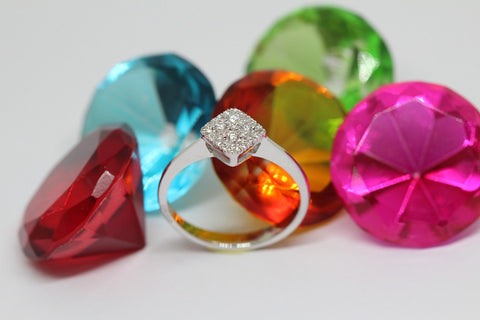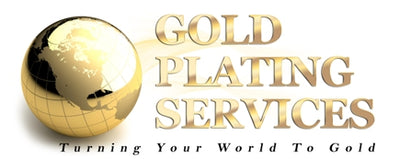If you are involved with gold plating jewelry, you are undoubtedly familiar with the different types of gold, whether it be 14, 18, or 24-karat. While a karat is a measure of gold purity, a carat is something different altogether. Though the two terms are sometimes used interchangeably, a karat is a standard for gold, and a carat is a standard for diamonds.

(Pixabay / kakashi7321)
A diamond’s value is determined, in part, by its carat. Carat is the term used to measure the diamond’s total mass. It is just one of the four factors used to measure the integrity of a diamond, also known as the four C’s.
The Four C’s of Diamonds
- Carat. A carat equals 200 mg. The term carat can be applied to many gemstones, not just diamonds. Note that a diamond’s carat is different than its size. A high-carat diamond may actually look smaller if it has been cut poorly.
- Cut. Cut is the most important of the four C’s. A good cut is the difference between a beautiful, sparkly gem and one that lacks “brilliance and fire” (terms used by jewelers to describe a diamond’s luster). As mentioned above, if a diamond is cut too deep, it will appear smaller than it actually is.
- Color. Color is second only to cut when it comes to diamond standards. The less color a diamond has, the greater its worth. The Gemological Institute of America (GIA) has developed a letter system for judging diamond color. The highest grade (D) goes to colorless gems. The lowest grade (Z) goes to those that have a yellowish or brownish hue.
- Clarity. Diamonds can have surface flaws, known as blemishes, and internal flaws, known as inclusions. These flaws are usually very small and can only be seen with a microscope, not the naked eye. Nevertheless, clarity can affect the value of a diamond. Those with the fewest flaws are said to have the greatest clarity.
If diamonds are a bit too pricey for your budget, there are some nice alternatives to consider. Man-made diamonds, which are grown in a laboratory instead of cultivated naturally, tend to cost about 20 percent less. Moissanite is another attractive alternative that is just about as hard as actual diamonds. Moissanite is a crystal that occurs naturally in meteorites and is very brilliant and sparkly. Many people prefer it to cubic zirconia and other diamond look-alikes because of its luster and scratch-resistance. You can purchase moissanite for a small fraction of what you would spend on a diamond.
Do you desired to purchase a diamond but cannot afford it? Do not be sad. There are ways actually that you yourself should assess. For example, try to see the difference of its carat, the cut grade, color and clarity of it. You may find an affordable one that suits your budget. So keep reading our infographics.
![How to Pick the Best Diamond for your Budget [infographic] How to Pick the Best Diamond for your Budget [infographic]](https://cdn.shopify.com/s/files/1/1344/1717/files/How-to-Pick-the-Best-Diamond-for-Your-Budget.jpg)
